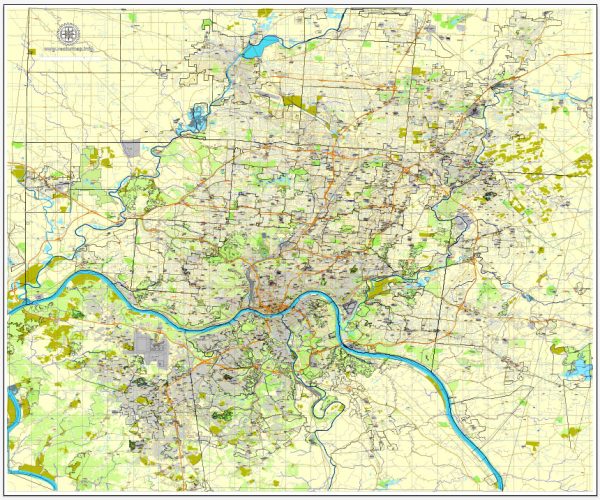Cincinnati, Ohio, has a rich history of urban development that spans several centuries. The city, situated along the Ohio River, played a crucial role in the westward expansion of the United States and experienced significant growth and transformation over the years. Here is a brief overview of the history of urban development in Cincinnati:
- Early Settlement (Late 18th Century):
- Cincinnati was founded in 1788 by Colonel Robert Patterson and John Cleves Symmes. It was one of the first major settlements in the Northwest Territory.
- The city grew rapidly due to its strategic location along the Ohio River, making it a key transportation and trading hub.
- Economic Boom and River Trade (19th Century):
- In the 19th century, Cincinnati became a major center for trade and commerce, with a focus on river trade and manufacturing.
- The construction of the Miami and Erie Canal in the 1820s further boosted the city’s economic development by providing a water route to Lake Erie and connecting Cincinnati to the Great Lakes.
- Industrialization and Growth (Late 19th Century):
- The late 19th century saw significant industrialization, with Cincinnati becoming known for industries such as meatpacking, soap production, and machine manufacturing.
- The city’s population and physical footprint expanded as industrialization brought an influx of people seeking employment.
- Over-the-Rhine and German Influence:
- Over-the-Rhine, a historic neighborhood in Cincinnati, developed in the mid-19th century and was known for its German heritage, architecture, and breweries.
- The neighborhood still retains many of its historic buildings, but it has undergone various phases of redevelopment and revitalization.
- Transportation Advances (Early 20th Century):
- The advent of railroads and improved transportation infrastructure further enhanced Cincinnati’s connectivity and economic growth.
- Suburban development began to spread as transportation options allowed people to live outside the city center and commute.
- Mid-20th Century Challenges:
- Like many American cities, Cincinnati faced challenges in the mid-20th century, including suburbanization, population decline, and economic restructuring.
- Urban renewal projects during this period often led to the demolition of historic buildings and neighborhoods.
- Urban Renewal and Modernization (Late 20th Century):
- The latter half of the 20th century saw efforts to revitalize and modernize Cincinnati’s urban core.
- The construction of major landmarks, such as the Riverfront Stadium and later the Great American Ball Park, contributed to the city’s redevelopment.
- Contemporary Development (21st Century):
- Cincinnati has continued to evolve in the 21st century, with ongoing efforts to promote urban living, economic development, and cultural attractions.
- The city has invested in infrastructure, parks, and public spaces to enhance the quality of life for residents and attract businesses.
Overall, Cincinnati’s history of urban development reflects its dynamic role in the growth of the United States, from a frontier settlement to a thriving city with a diverse economy and a mix of historic and modern architecture.


 Author: Kirill Shrayber, Ph.D.
Author: Kirill Shrayber, Ph.D.